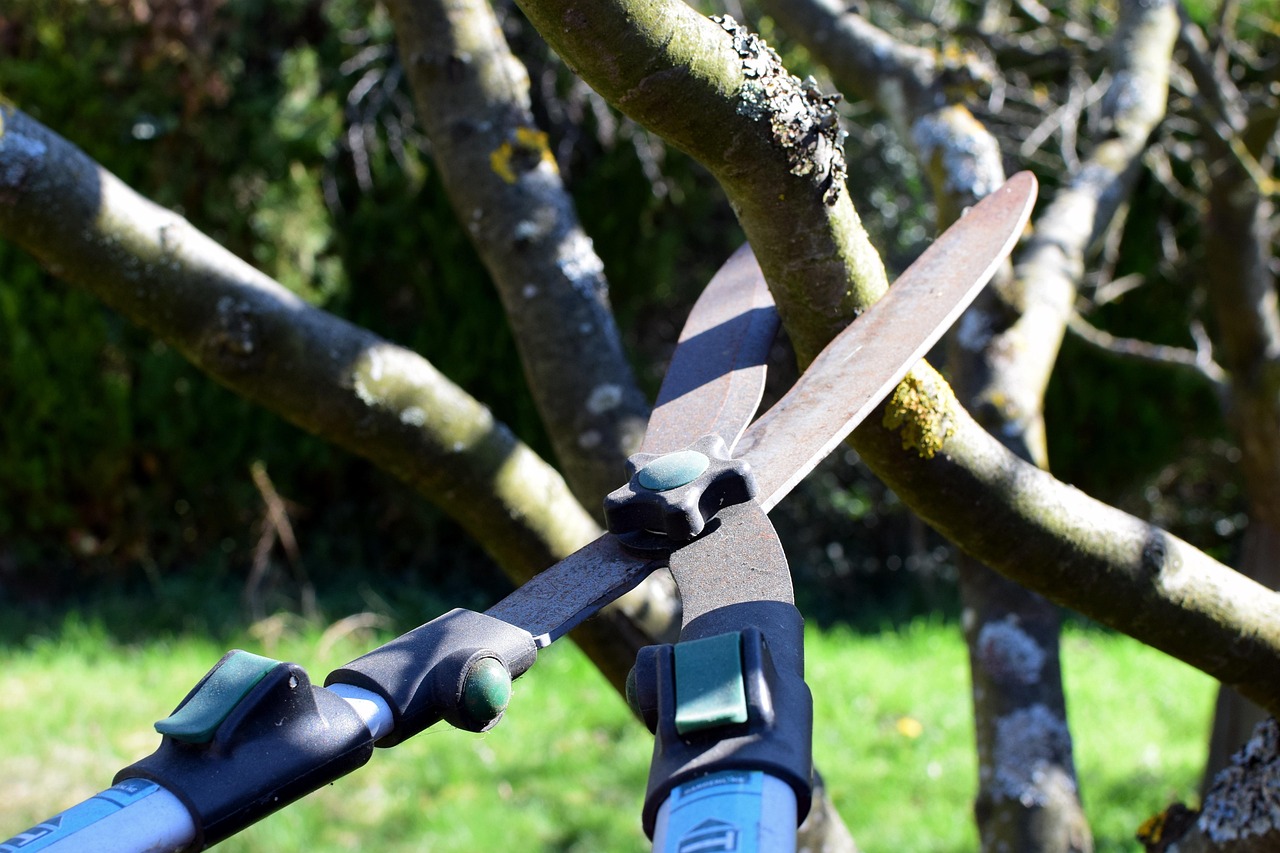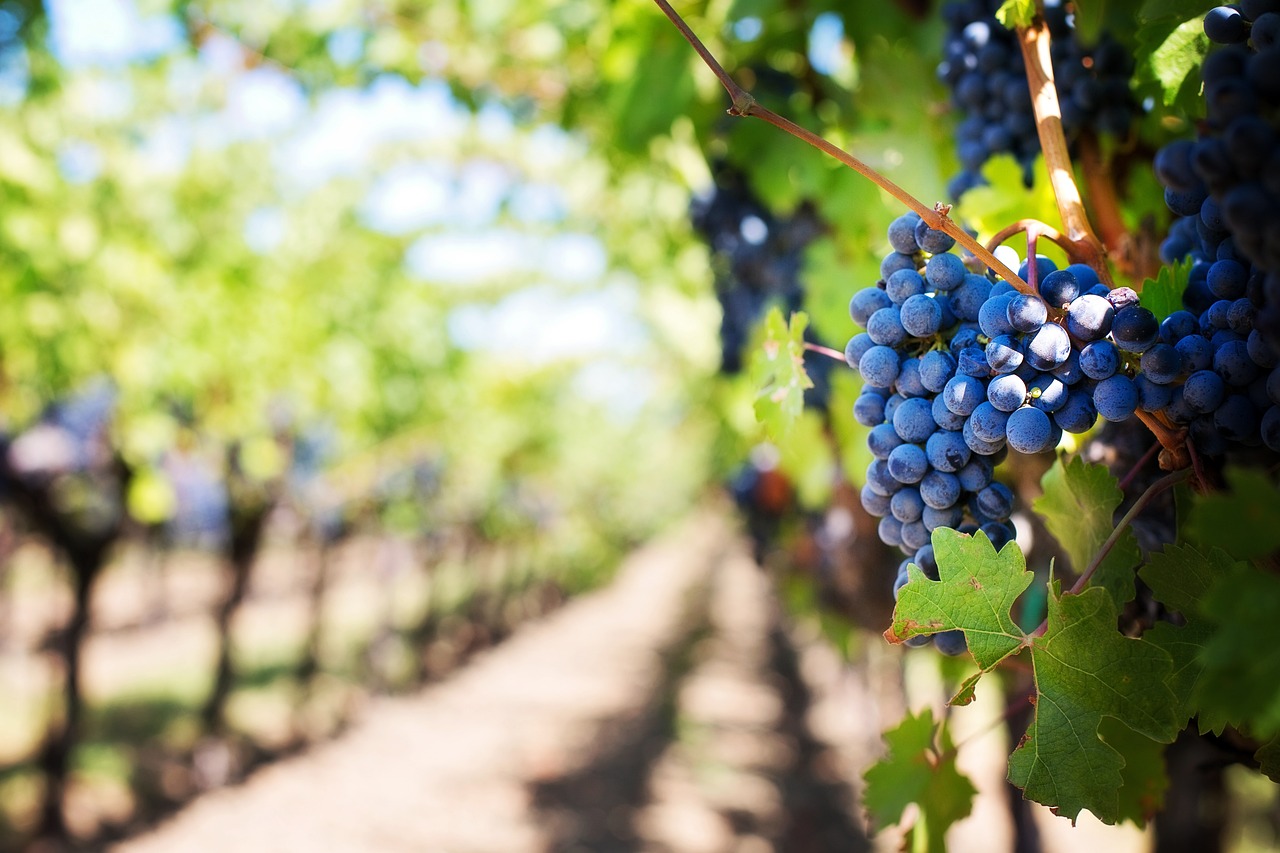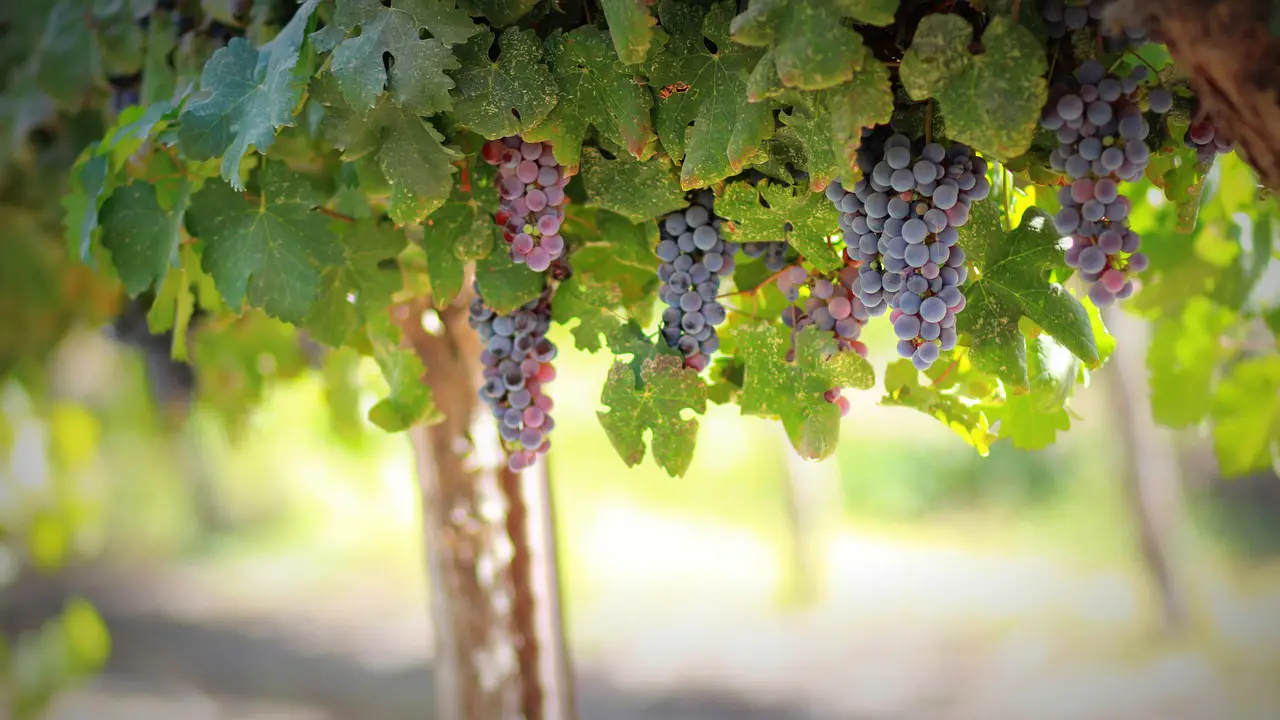Effective grapevine pruning is essential for maximizing vineyard and winery yield. Proper techniques enhance fruit quality, improve vine health, and ensure optimal sunlight exposure. This process ultimately leads to higher production levels and better wine quality.
Understanding Grapevine Pruning
Grapevine pruning is a vital practice in viticulture. This technique involves selectively removing certain parts of the vine to promote better growth and fruit production. The timing and method of pruning can significantly affect the overall yield and quality of the grapes produced. By carefully managing the vine’s structure, growers can enhance airflow, reduce disease risk, and maximize sunlight exposure.

Pruning is typically performed during dormancy, which occurs in late winter to early spring. However, the specific timing may vary based on the grape variety and regional climate conditions. Understanding the physiological aspects of grapevines helps growers make informed decisions about when and how to prune.
The Benefits of Pruning
There are several key benefits associated with proper grapevine pruning. These advantages not only improve yield but also enhance the quality of the grapes produced. Below are some of the primary benefits:
- Improved Air Circulation: Pruning opens up the vine canopy, allowing for better airflow. This reduces humidity levels around the grapes, decreasing the likelihood of fungal diseases.
- Increased Sunlight Exposure: By removing excess foliage, more sunlight reaches the fruit. This exposure is crucial for photosynthesis and helps in the development of flavors.
- Enhanced Fruit Quality: Well-pruned vines produce fewer clusters of grapes that are larger and more flavorful. This leads to higher-quality wine production.
- Better Vine Management: Pruning allows growers to control the shape and size of the vine, making it easier to manage vineyard resources and practices.
Types of Pruning Techniques
There are various pruning techniques that grape growers may employ, each with its unique advantages. The choice of technique depends on factors such as grape variety, growth habit, and desired outcomes. Here are some common pruning methods:

- Cane Pruning: This method involves leaving one or two canes from last year’s growth while cutting back other shoots. It is suitable for vigorous varieties and encourages high-quality fruit production.
- Shoot Pruning: In this technique, growers remove unwanted shoots that develop from the main trunk to maintain a focus on the desired fruiting wood.
- Spur Pruning: This method leaves short spurs on the vine, which can produce one or two buds each season. It is commonly used for less vigorous varieties.
- Renewal Pruning: Growers periodically replace older canes with new growth to maintain a healthy vine structure over time.
Factors Influencing Pruning Practices
Several factors influence how grapevines should be pruned for maximum yield. Understanding these elements can help vineyard managers make better decisions regarding their pruning strategies. Key factors include:
| Factor | Description |
|---|---|
| Grape Variety | Different varieties have unique growth habits and fruiting characteristics that dictate specific pruning needs. |
| Vine Age | Younger vines may require different pruning techniques compared to mature vines that have established growth patterns. |
| Climate Conditions | Environmental factors such as temperature, rainfall, and humidity can impact vine growth and fruit development. |
| Pest and Disease Pressure | A healthy pruning strategy can help manage pests and diseases that may affect vine health and fruit quality. |
The relationship between these factors is complex. For instance, a vigorous grape variety grown in a humid climate may require more aggressive pruning compared to a less vigorous variety in a drier region. Understanding these nuances helps vineyard managers tailor their approach for optimal results.
Moreover, ongoing research in viticulture continues to reveal new insights into effective pruning practices. These findings encourage growers to adapt their techniques based on emerging knowledge and trends within the industry.

The Importance of Timing in Pruning
Timing plays a crucial role in the success of grapevine pruning. Dormant pruning is generally preferred as it minimizes stress on the vine and allows for better recovery during the growing season. However, late winter or early spring pruning must be managed carefully to avoid frost damage to new buds.
In addition to seasonal timing, growers should also consider the specific growth stage of the vine when deciding on pruning techniques. For example, post-flowering adjustments may be necessary to ensure adequate air circulation and sunlight exposure as the grapes develop.
A well-timed pruning schedule can lead to increased yields and improved grape quality, ultimately benefiting winery production. Understanding local climatic patterns and vineyard conditions will help growers refine their timing strategies effectively.

Pruning Techniques for Different Growth Stages
Understanding the growth stages of grapevines is essential for implementing effective pruning strategies. Each stage presents unique opportunities and challenges that can influence the overall yield and quality of grapes. Below are the key growth stages and recommended pruning techniques for each.
1. Dormant Stage
The dormant stage occurs during the winter months when the vines are not actively growing. This is the ideal time for major pruning activities. During this period, growers should focus on:
- Removing Dead or Diseased Wood: Inspecting vines for any signs of disease or decay is crucial. Removing affected branches helps maintain vine health.
- Shaping the Vine: Growers can create a desired structure by selecting canes to keep and trimming excess growth.
- Managing Bud Load: Reducing the number of buds supports better fruit quality by allocating resources more effectively.
2. Bud Break Stage
Bud break marks the transition from dormancy to active growth. This is when new shoots emerge from the buds. Although major pruning should be completed before this stage, some light pruning may still be beneficial:
- Removing Weak Shoots: As new shoots develop, growers should identify and remove those that are weak or poorly positioned to ensure better airflow and sunlight exposure.
- Encouraging Healthy Growth: Lightly trimming vigorous shoots can help direct energy towards more fruitful branches.
3. Flowering Stage
During flowering, the vine focuses its energy on producing flowers that will eventually develop into grapes. Pruning at this stage is limited, but adjustments can still be made:
- Cluster Thinning: Removing excess flower clusters allows for better fruit development and increases overall fruit quality.
- Managing Canopy Growth: Pruning leaves that obstruct sunlight from reaching flower clusters can improve pollination outcomes.
4. Fruit Set Stage
The fruit set stage follows flowering and marks the beginning of grape development. While major pruning should be avoided, some practices can enhance outcomes:
- Adjusting Canopy Density: Carefully removing leaves or shoots that overcrowd the vine’s canopy helps improve sunlight penetration and airflow.
- Monitoring Energy Allocation: Pay attention to how the vine allocates energy. Adjustments may be needed based on observed growth patterns.
The Role of Training Systems in Pruning
The choice of training system significantly impacts pruning strategies and overall vineyard management. Various training systems dictate how vines grow and interact with their environment. Below are some popular training systems along with their implications for pruning:
1. Vertical Shoot Positioning (VSP)
The VSP system promotes upright growth, allowing for optimal sunlight exposure and air circulation. Key considerations for pruning with this system include:
- Maintaining Canopy Height: Regular trimming of shoots helps maintain a uniform height, promoting balanced growth.
- Managing Lateral Growth: Control lateral shoots to prevent overcrowding and ensure sunlight access to lower grapes.
2. Guyot Training
This method involves leaving one or two long canes each year while cutting back the rest. Pruning practices in Guyot training focus on:
- Selecting Canes Wisely: Choose strong, healthy canes to retain while removing weaker ones to maintain vine vigor.
- Ensuring Adequate Buds: Leave an appropriate number of buds on each cane to balance quantity and quality in grape production.
3. Pergola Training
Pergola systems allow vines to spread out horizontally, which can protect grapes from sunburn. Pruning in pergola systems requires attention to:
- Cane Management: Regularly prune canes to control length and maintain the desired canopy shape.
- Fruit Thinning: Strategic thinning of clusters helps prevent shading and promotes even ripening across all fruit.
The Impact of Soil Health on Pruning Outcomes
The health of vineyard soil plays a critical role in the effectiveness of pruning practices. Healthy soil promotes strong vine growth, which can influence how vines respond to pruning efforts. Here are some important soil health considerations:
- Nutrient Availability: Ensuring that soil has adequate nutrients supports healthy vine growth and recovery from pruning.
- Soil Structure: Good soil structure enhances root development, which in turn supports healthier vines capable of withstanding pruning stress.
- Pest Management: Healthy soil can help reduce pest populations, minimizing the risk of diseases that could affect vine health post-pruning.
A comprehensive approach that includes monitoring soil health alongside implementing precise pruning techniques will help maximize vineyard yields and quality over time.
Common Pruning Mistakes to Avoid
Even experienced vineyard managers can make mistakes when it comes to pruning. Understanding common pitfalls can help growers avoid costly errors that may impact vineyard yield and grape quality. Here are some of the most frequent mistakes made during grapevine pruning:
1. Over-Pruning
One of the most significant mistakes is over-pruning, which can lead to reduced yields and poor fruit quality. Key points to consider include:
- Removing Too Much Wood: Cutting away excessive wood can weaken the vine and result in fewer buds for fruit production.
- Disrupting Vine Balance: Each grapevine has an optimal balance of leaves and fruit. Over-pruning disrupts this balance, negatively affecting growth.
2. Pruning at the Wrong Time
The timing of pruning is critical for successful vine management. Common mistakes include:
- Pruning Too Early: Early pruning can expose new buds to frost damage, severely impacting the growing season.
- Pruning Too Late: Waiting too long can lead to excessive growth, making it difficult to manage the canopy effectively.
3. Neglecting Vine Training Systems
Failing to consider the chosen training system during pruning can hinder vine health and grape production:
- Inconsistent Canopy Management: Not adapting pruning techniques to fit the training system can lead to uneven growth and poor fruit development.
- Ignoring Structural Integrity: Pruning without regard for vine structure can compromise the overall health and shape of the vine.
Tools and Techniques for Effective Pruning
Having the right tools and employing appropriate techniques are essential for successful grapevine pruning. Below are some commonly used tools along with best practices for their use:
1. Essential Pruning Tools
A well-equipped vineyard manager should have access to several key tools, including:
- Bypass Pruners: Ideal for making precise cuts on small branches, allowing for clean wounds that heal quickly.
- Loppers: Used for cutting thicker branches that cannot be handled by hand pruners, providing leverage for clean cuts.
- Saws: For larger cuts, a saw is necessary to ensure proper removal of thick wood without damaging surrounding areas.
- Protective Gear: Wearing gloves and safety glasses is crucial for preventing injuries while pruning.
2. Pruning Techniques
In addition to having the proper tools, vineyard managers should be familiar with effective pruning techniques:
- Making Clean Cuts: Always aim for smooth cuts to promote faster healing and reduce the risk of disease.
- Angle of Cuts: Cut at a 45-degree angle, which helps water runoff and reduces the chance of rot.
- Avoiding Topping: Topping can lead to excessive growth of lateral shoots, which may not produce quality fruit.
The Importance of Post-Pruning Care
The work does not end once the pruning is complete. Post-pruning care is equally vital for ensuring healthy vine recovery and optimal grape production. Important steps include:
- Cleansing Tools: After pruning, sanitize tools to prevent disease transmission between vines.
- Assessing Vine Health: Monitor vines for any signs of stress or disease following pruning. Early detection can prevent further issues.
- Watering and Nutrient Management: Providing adequate water and nutrients post-pruning supports vine recovery and promotes healthy growth.
The Role of Technology in Pruning Practices
As technology advances, vineyard management practices continue to evolve. Innovative tools and methods can enhance pruning efficiency and effectiveness. Some noteworthy technologies include:
1. Precision Agriculture Tools
The use of precision agriculture tools allows growers to collect data on vine health and environmental conditions. Key technologies include:
- Drones: Drones equipped with cameras can provide aerial views of vineyards, helping identify areas needing attention.
- Soil Moisture Sensors: These devices monitor soil moisture levels, allowing growers to optimize irrigation practices post-pruning.
2. Software Solutions
Advanced software programs enable vineyard managers to track pruning activities and analyze data for better decision-making:
- Yield Mapping Software: This software can help assess the impact of different pruning techniques on yields over time.
- Disease Management Apps: Apps that track weather patterns and disease risks help inform timely pruning decisions and post-care practices.
The integration of technology into traditional practices can significantly enhance vineyard productivity and quality, ultimately benefiting winery operations.
Future Trends in Grapevine Pruning
As the viticulture industry continues to evolve, several trends are emerging that will shape future grapevine pruning practices. Staying informed about these trends can help vineyard managers adapt and optimize their strategies for greater yields and improved wine quality.
1. Sustainable Practices
There is a growing emphasis on sustainability in agriculture, including viticulture. Sustainable practices in pruning may include:
- Organic Pruning Techniques: Utilizing organic methods to manage pests and diseases can minimize chemical inputs while maintaining vine health.
- Cover Cropping: Implementing cover crops can improve soil health, which in turn supports better vine growth and resilience.
2. Precision Viticulture
The trend toward precision viticulture focuses on data-driven approaches to vineyard management. This includes:
- Customized Pruning Plans: Using data analytics to tailor pruning techniques based on specific vineyard conditions, resulting in optimized yields.
- Real-Time Monitoring: Employing sensors that provide immediate feedback on vine health can inform timely pruning decisions and interventions.
3. Genetic Research
Advancements in genetic research are leading to the development of grapevines that are more resilient to environmental stresses. Implications for pruning practices may include:
- Disease-Resistant Varieties: Breeding new grape varieties that are naturally resistant to common diseases can reduce the need for aggressive pruning.
- Improved Growth Patterns: Genetically engineered vines may exhibit growth patterns that require different pruning approaches, allowing for more efficient management.
The Economic Impact of Pruning Practices
The financial aspects of grapevine pruning cannot be overlooked. Effective pruning strategies can lead to significant economic benefits for vineyard owners. Key considerations include:
- Cost Efficiency: Streamlined pruning processes can reduce labor costs and time spent in the vineyard, improving overall profitability.
- Higher Quality Fruit: Quality grapes command higher prices in the market. Proper pruning enhances fruit quality, directly impacting revenue.
- Long-Term Vineyard Health: Investing in sound pruning practices contributes to the long-term sustainability and productivity of the vineyard, ensuring continued profitability.
Final Thoughts
Grapevine pruning is a crucial aspect of vineyard management that directly influences the yield and quality of grapes. By understanding the importance of timing, techniques, and tools, vineyard managers can optimize their pruning strategies for maximum results. The integration of technology and sustainable practices further enhances the potential for success in modern viticulture.
As the industry evolves, staying informed about emerging trends and adapting practices accordingly will be essential for maintaining competitiveness. The focus on healthy vines, effective pruning techniques, and economic viability will ultimately lead to better wines and flourishing vineyards.
In conclusion, mastering grapevine pruning not only improves vineyard productivity but also contributes to the overall success of winery operations. Growers who invest time and resources in refining their pruning practices will reap the benefits of higher quality grapes and increased profitability in the long run.
